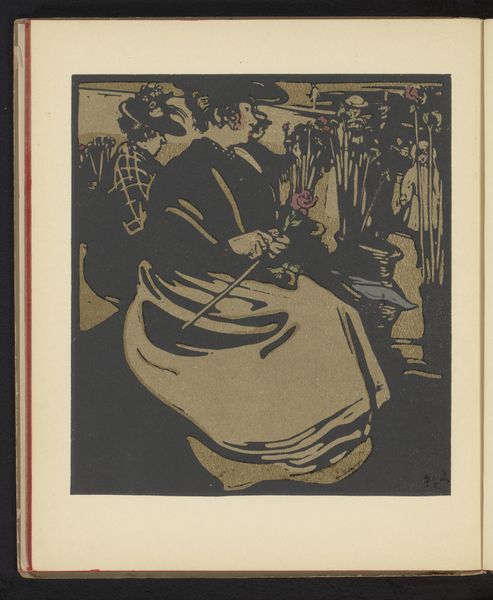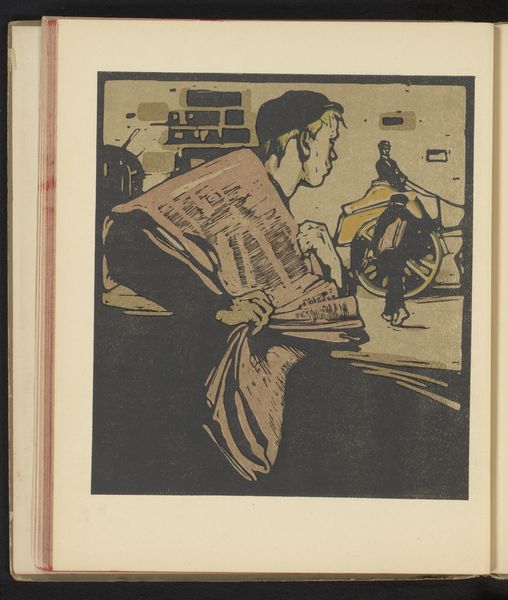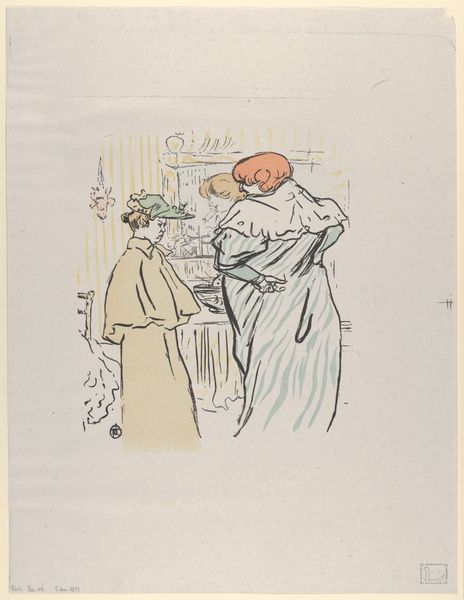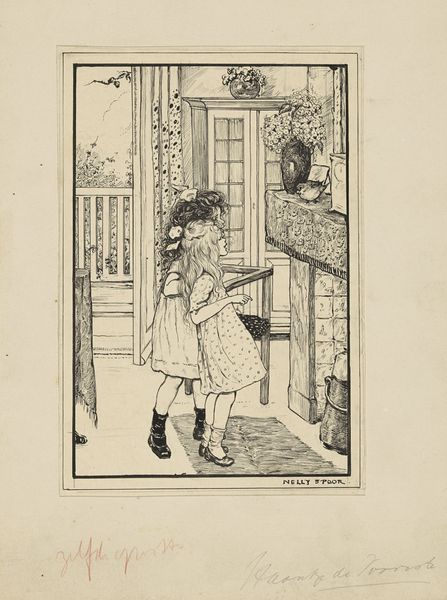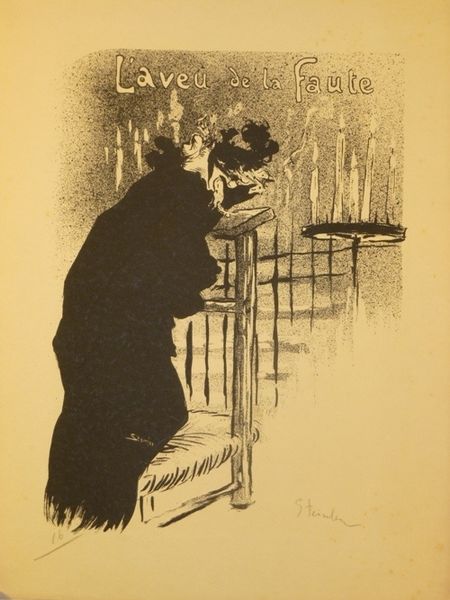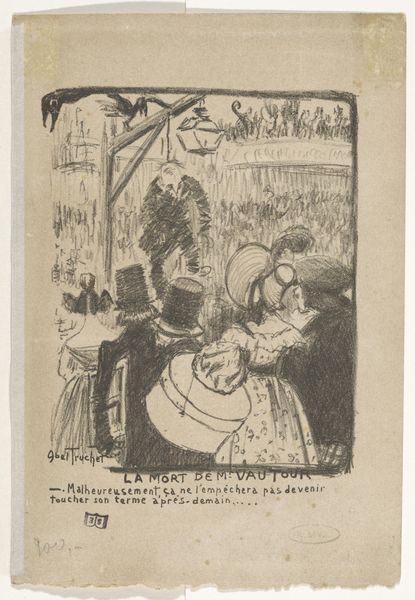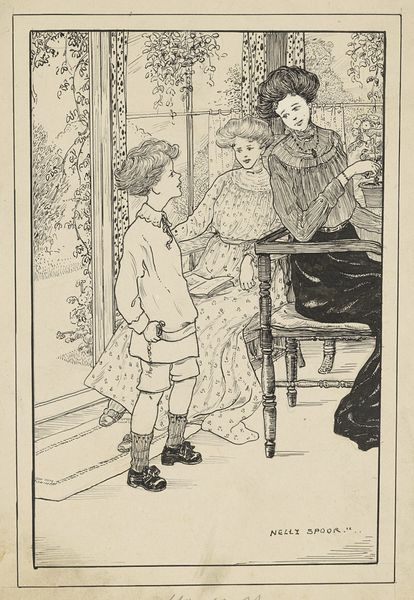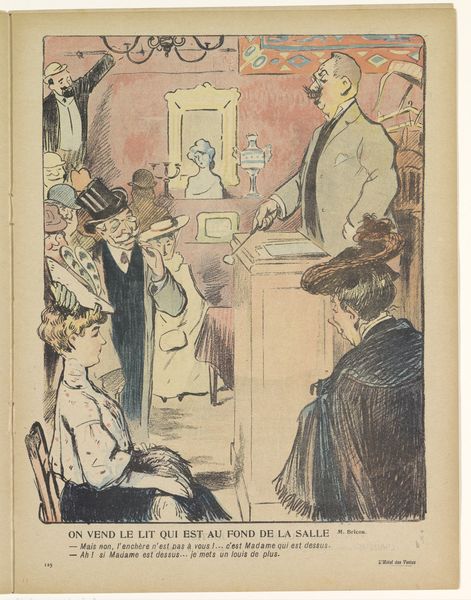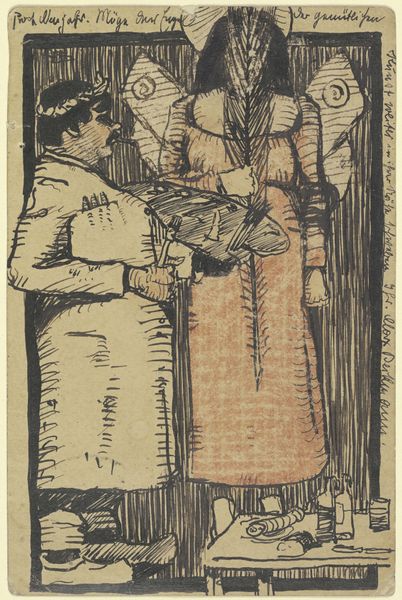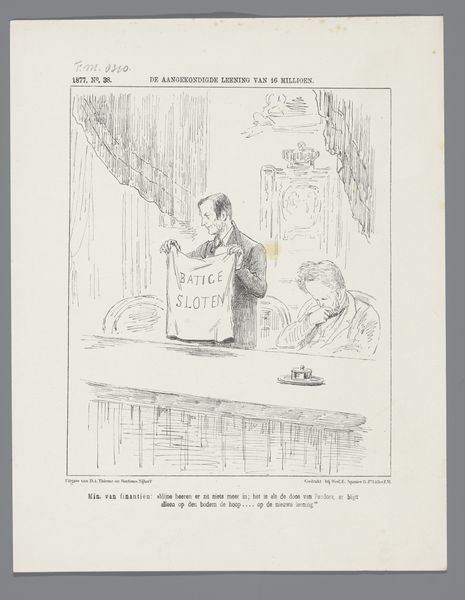
print, linocut
#
portrait
#
art-nouveau
# print
#
linocut
#
figuration
#
linocut print
#
genre-painting
Dimensions: height 333 mm, width 266 mm
Copyright: Rijks Museum: Open Domain
Curator: Here we have "Barvrouw," or "Barmaid" created by William Nicholson in 1898. He fashioned this artwork using a linocut technique, resulting in a very stylized print. Editor: Oh, this exudes such an elegant melancholy. The color palette feels muted, like a sepia-toned memory. I see in this piece a certain wistful detachment in her profile. It is not an everyday bar scene, I believe. Curator: Exactly! Notice how Nicholson distills the bar scene to just a few essential elements. Bottles, glasses, and that intriguing figure in the background... There is that very controlled economy of line and form so typical of art nouveau aesthetics, right? Editor: Yes, and observe how Nicholson simplifies forms, turning everyday objects—bottles and glasses—into almost hieroglyphic symbols, not so far away from Art Deco, although predating that period. There’s something deeply embedded in these simplified forms – it's the memory of countless anonymous encounters in public places. Curator: I completely agree! He manages to capture the essence of a public setting without overwhelming us with detail. And the use of linocut here is essential. The medium lends itself to stark contrasts and simplified forms, wouldn't you agree? He exploits the strengths of the material wonderfully! Editor: It’s remarkable! I feel Nicholson uses the linocut’s limitations—those bold lines—to somehow suggest a kind of societal barrier. Maybe it symbolizes the unspoken rules, or the expected roles women are made to follow and act up to in these times of fast change? She seems poised and observant but held back by an invisible fence, no? Curator: An absolutely fascinating point. I'd never considered how the technical aspect echoes societal structures of the time. He plays into this double image we could have, as viewer, when faced with a young modern working woman! And I guess he chose her job with this intent in mind. The very act of cutting into the lino becomes symbolic too, shaping not only art but perception itself. Editor: Beautifully said! Ultimately, this is a work that speaks volumes with so little; it uses only the essential forms to offer an important portrait of modern social life on the verge of great cultural shifts. Curator: An insightful note to end on. It shows the power of simplifying an artwork to open our eyes to its profound themes.
Comments
No comments
Be the first to comment and join the conversation on the ultimate creative platform.
